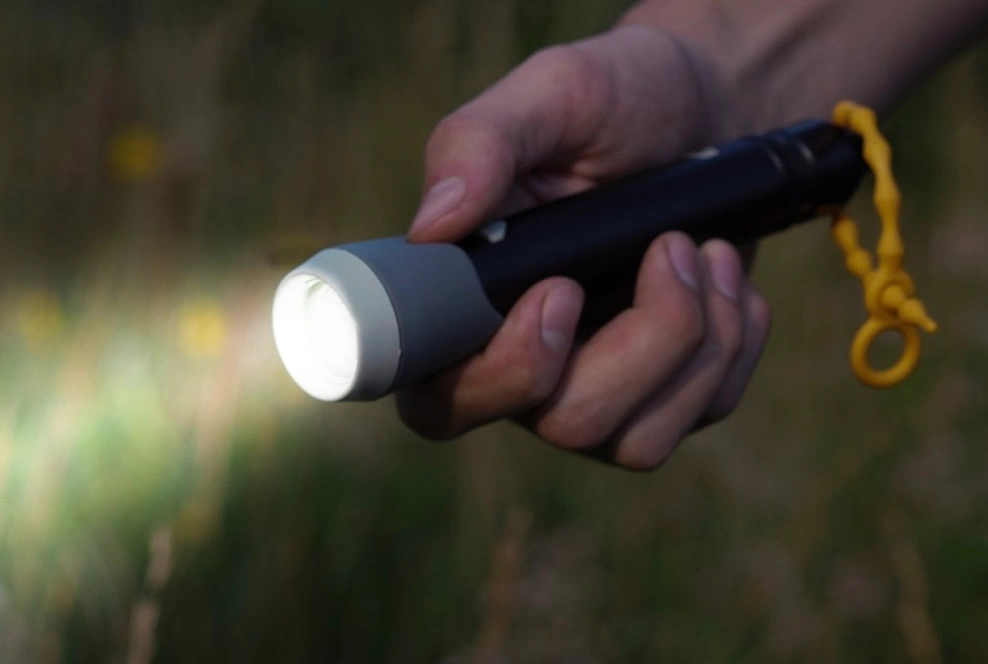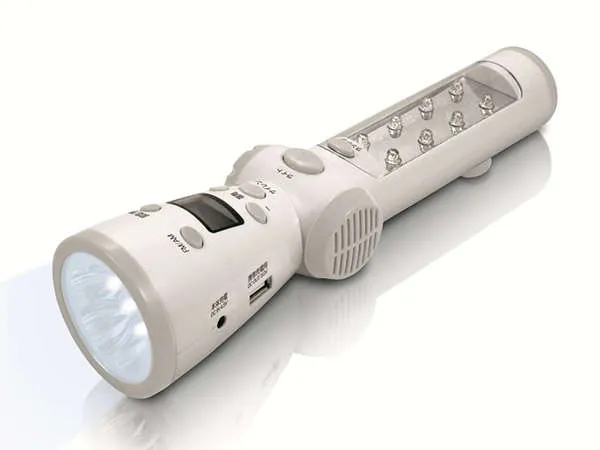Struggling in the dark? Look no further– this guide sheds light on the latest trends and innovations in flashlight technology. Discover today how you can get the most out of your flashlight needs and see what the future holds for this industry.
Get ready to shine a light on your illumination needs!
Flashlights have been around for centuries, but until recently, their technology has remained relatively unchanged. However, the past decade has seen technological breakthroughs that have ushered in numerous changes in flashlight design, features and performance.
This guide will provide a comprehensive overview of flashlight technology and its future prospects, from current trends to emerging methods of illumination. We’ll address some basic concepts of light generation and explore the differences between LED (light-emitting diode) flashlights and traditional incandescent models. We’ll also take a look at the latest advancements in flashlight technology, such as improved battery designs, power regulation systems, laser illumination methods and more.
No matter if you are an outdoor enthusiast looking for better lighting options or a business seeking to incorporate state-of-the-art flashlights into your products or services—this guide is designed to give you all the key information needed so you can make well-informed decisions related to flashlight use and development. Let’s take a closer look at what makes today’s flashlights so advanced.

Brief explanation of the importance of flashlights
Flashlights are a critical tool for personal safety in low-light scenarios. They can also provide temporary illumination for activities such as camping, hiking, and search and rescue. Flashlights come in many shapes and sizes, from pocket-sized flashlights to bulkier headlamps and lanterns.
Recent advances in flashlight technology have made it easier than ever to carry a powerful source of light with you. Flashlights now come with a variety of features such as waterproofing, vibration sensors, highly precise beam angles, multi-mode functions, two-way bezels for easy switching between hands-free or handheld operation, long battery life and advanced cooling systems. The lighting power of these devices has also markedly improved; some specialized models can reach up to 1000 lumens — more than enough to temporarily blind an assailant in a dangerous situation.
Innovations like LED bulbs make lights more efficient by drastically reducing their power drain while increasing their life span. New developments such as multicolor temperature lights put users in control of how they want their flashlight to look — choosing between warm white (3000 Kelvin) or cool tones (4000K or 6000K).
The prominence of gadget lifestyle has also propelled the rise of connected flashlights; lights that can often be operated using smartphones over Bluetooth or WiFi through apps that provide full control over the device’s settings like timer functions and regulating brightness levels according to user preference.
Purpose of the guide
This guide is designed to provide readers with a comprehensive overview of the latest trends and innovations in flashlight technology. It will explore advancements in LED-based flashlights, their design and power capabilities, as well as their potential applications in different fields and industries.
In addition, the guide will touch on some of the recent technological advances that are making flashlights even more versatile and useful than ever before. By reading this guide, readers can gain a better understanding of the possible futures for flashlight technology.
Current State of Flashlight Technology

Flashlight technologies have come a long way since their initial implementation during World War II. Nowadays, some of the most advanced flashlights can emit thousands of lumens in an instant and even feature adjustable beam angles for customized light exposure. Beyond that, several other cutting-edge innovations have been incorporated into modern flashlights, allowing for increased performance and safety.
The most impactful advancement to flashlight technology recently has been the widespread use of LED bulbs. Drawing considerably less power than traditional bulbs and lasting many times longer due to lower wattages, LEDs have revolutionized the way in which we utilize flashlights both professionally and recreationally. In addition to their low energy consumption, they are available in a variety of color temperatures (measured in Kelvin), providing users with options that weren’t previously possible before LED lighting was adopted on a large scale.
Floodlighting technology is also being implemented into many types of flashlights today, with several models able to switch between floodlight and spotlight at the press of a button. This allows for more versatility than ever before when using flashlight – from highlighting particular objects such as tracks or evidence at night to providing dispersing wide beams across expansive spaces – you can do it all with an increasingly affordable floodlighting system carefully designed into your chosen flashlight model.
There is also progress being made towards developing darker colored tactical lights, which are specifically designed for use in environments where high-visibility blinding may be undesirable – like law enforcement/security operations or outdoor activities such as hunting. As advancements continue being made from generation to generation within the industry, it won’t be long until these state-of-the-art capabilities become the norm!
Overview of current flashlight technology
Flashlight technology has come a long way since the days of incandescent bulbs. Newer technologies such as LEDs and hybrid systems are more efficient, brighter, and provide improved performance. Here we will explore the current types of flashlight technology available on the market and look at some insights into where the industry is heading in terms of innovations and trends.
Incandescent Flashlights: The earliest flashlights used incandescent bulbs, which were relatively inefficient but inexpensive to produce. While these types of bulbs still exist in certain models, they have been largely replaced by more efficient lighting technologies. Incandescent flashlights are typically quite dim compared to their LED counterparts, and require frequent battery replacement due to their poor energy efficiency.
LED Flashlights: LED (light-emitting diode) flashlights use chips which produce light when an electric current passes through them. LEDs are incredibly efficient because they require less energy to produce a given amount of light compared with conventional incandescent light sources. They also last much longer than traditional flashlights since they generate much less heat during operation, making them more resistant to wear-and-tear related issues caused by frequent bulb replacements or running on low battery power levels.
Hybrid Flashlights: Hybrid flashlight designs combine LED lighting with other technologies such as lasers or ultraviolet (UV) light sources in order to create a wider array of illumination options. Hybrid flashlights may also utilize advanced focusing optics and various rechargeable battery options for increased convenience or efficiency in certain applications.
Rechargeable Flashlights: As mentioned before, rechargeable batteries are now being used in many flashlight designs due to their convenience and portability benefits particularly for outdoor use scenarios. Rechargeable batteries can also be used with larger capacity packs which last longer than typical disposable batteries without needing replacement for extended periods.
Pros and cons of current technology

Flashlights have been used for many years and the technologies used have changed a great deal over time. There has been an increase in the number of available flashlight models, with the current industry boasting designs that are battery-powered, LED-powered or even solar-powered. While all of these new systems have their own pros and cons, they all share common benefits and drawbacks.
The pros of battery-powered flashlights include their availability and affordability, allowing people to purchase them quickly and cheaply wherever they might be. Additionally, since they tend to use existing battery technology, replacement batteries can be easily acquired when needed. On the other hand, battery-powered flashlights are prone to failure due to loose connections between cells or drained batteries that can’t be recharged.
LED-powered flashlights offer several advantages over traditional flashlights, such as their typically longer lives due to lower power levels (which can last for decades without needing replacement), better brightness (making them safer), more resistance to shock damage (which helps protect internal components) and improved energy efficiency (with some designs surviving through up to 100 hours on one set of batteries). However, the cost of replacing LEDs is extremely high due to their sophisticated construction; additionally they still require power sources that need regular charging or replacement.
Finally solar-powered flashlights leverage sunlight directly in order to operate – as such they are completely maintenance free but may produce less light than similar traditional designs unless specialized high efficiency LEDs are employed which draw more energy from the sun. Additionally most solar models cannot be used indoors without access to sufficient sunlight levels making them impracticable for certain situations despite their green appeal.
Emerging Trends in Flashlight Technology
Today’s flashlight technology has come a long way from the traditional bulky Maglite torches. From light emitting diodes (LEDs) to ultra-durable lithium ion batteries, there are a range of emerging trends that have revolutionized the industry. Here are the most noteworthy ones.
- LED Flashlights
Led technology is transforming flashlight design and performance. LEDs provide brighter, longer-lasting light at much lower energy consumption than traditional filament bulbs. They generate virtually no heat, allowing for smaller and lighter designs while providing better performance than filament bulbs of equal wattage. - Rechargeable Batteries
Traditional battery technology is giving way to more durable and efficient rechargeable lithium ion batteries with much longer life spans than alkaline batteries. This viable alternative allows you to save money over the long run as you no longer need to replacing disposable one-time use cells regularly. - Solar Power Options
Solar cells now come embedded in many advanced flashlight designs, allowing them to charge directly from sunlight or even indoor lighting sources when not in use, making them an ideal choice for outdoors adventurers looking for extended periods of operation without having access to grid power outlets or disposable batteries.
4 Integrations with Smart Technology
Many of today’s flashlights include built-in sensors that allow them to turn on automatically when needed or be integrated with apps for remote control and other intelligent capabilities such as scheduled operations or battery status notifications via text messages or emails alerting you when your device needs recharging.
Overview of emerging trends

In recent years, a number of innovations in flashlight technology have revolutionized the industry. Advances in LED bulbs, better batteries, and digital designs have made flashlights more capable and more affordable than ever before. Consumers now have access to flashlights that can fit into their pockets, provide incredibly bright light, generate multiple beams of light from one unit, and also provide a range of other features such as rechargeable batteries and phone charging capabilities. Additionally, the trend toward miniaturizing flashlight components into smaller packages has made them even more portable for many different applications.
These advancements in flashlight technology are set to continue in the coming years. Here is an overview of some new trends you should look out for.
- Improved run-time: Flashlight makers are finding ways to reduce battery drain and increase efficiency so that users experience longer overall life on a single charge or replacement battery.
- Multi-functionality: As we approach an era of connected homes and cities, look for manufacturers to incorporate connectivity features such as WiFi-enabled capabilities or Bluetooth control into their products. Such features could also include additional analytics tools that work with mobile devices or systems like Smart Home setup kits so users can monitor energy usage remotely.
- Optional zoom feature: The days when zooming was simply physical expansion are over— now modern flashlights use electronic zooming that provides combinations of beam widths instantly when needed, rather than having to adjust manually each time a change is desired. This allows for greater flexibility depending on distance or whim during dark activities outdoors
- Automated heat management: We’ve seen year-over-year improvements concerning heat management with lights containing sophisticated cooling systems using fans or semiconductor chipsets activated by sensors rather than fixed intervals regardless of current use tempatures/usage levels. This keeps overall operation much safer without impact to performance quality when lighting conditions change rapidly.
Advancements in LED technology
Light-emitting diode (LED) technology is taking the flashlight market by storm, offering many benefits to users. These modern bulbs consume less energy, emit a much brighter light, and have a much longer lifespan than the traditional incandescent bulb. Paired with the relatively low cost and smaller size of LED bulbs, consumers are quickly shifting to LED over traditional incandescent technologies.
Over the past decade, LED research and development has made great strides in improving how these bulbs work and enhancing user experiences. The newest advancements focused specifically on LED flashlights offer better performance in every way. For example:
- Improved Efficiency – LEDs are capable of converting up to 80% of their energy into light—compared to less than 10% for incandescent bulbs—resulting in brighter lights that don’t require as many batteries or charge cycles. This makes them ideal for users who need reliable illumination anytime, anywhere.
- Multiple Light Modes – Modern LEDs can be adjusted with multiple brightness levels, without sacrificing intensity or battery life. Most modern lights also offer strobe and SOS settings which can be used in emergency situations where drawing attention is necessary.
- Rechargeable Lights – Flashlights that use rechargeable batteries are becoming more popular due to their enhanced convenience when compared to non-rechargeable models that require frequent battery changes. Additionally, rechargeable flashlights reduce users’ overall costs over time when compared to disposable batteries since they can be recharged hundreds of times without needing replacement.
In summary, advancements in LED technology have revolutionized how we illuminate our surroundings in all types of situations; from military operations to home repair projects, LED flashlights are quickly becoming our trusted companion for any task that requires light after dark!
Integration of smart technology in flashlights
The future of flashlight technology is marked by the integration of smart technology with regular flashlight products as well as innovations in existing flashlights. With the progress in fields such as microprocessors and sensor technology, there have been significant advancements in the features and functionalities associated with flashlights. Newer models offer features such as adjustable brightness levels, color lighting modes, memory recall for last settings, overheat protection, etc., making them the perfect pick for outdoors.
In addition to these advancements, modern flashlights are being enhanced with smart technology which provides extra convenience when using them outdoors. Features like WiFi & Bluetooth connectivity make it possible to control certain functions (such as brightness level), track light usage & performance statistics. Additionally, some models come integrated with rechargeable battery packs & solar charging capabilities further expanding their usability in extreme conditions beyond conventional scenarios. Many brands are investing considerable efforts developing new designs that incorporate power banks & environmental sensors giving users a truly hands-free operation while protecting them from hazardous situations.
Moreover, another trend that is gaining traction is integration of customizable running schemes and programs within certain specific models that make it easier to switch from one mode to another depending on user’s preferences. For instance, some models come integrated with a running schedule which automatically switches between specified modes based on ambient light & weather conditions. This helps users save time & effort planning their route through unknown terrain or changing between prearranged lighting specifications for indoor tasks.
Finally, safety has been an integral part of any outdoor activities and manufactured today come equipped with numerous safety features including shock resistance, overheat protection, anti-glare matte finish handles or hard cases. This not only improves user experience but also significantly increase their lifetime expectancy.
Sustainable and eco-friendly flashlight designs
In response to the increasing demand for sustainable and eco-friendly products, flashlight manufacturers have begun producing flashlights constructed from recycled materials or utilizing renewable energy sources. These advancements are beneficial for both environmental conservation and consumer convenience.
To reduce their environmental impact, some flashlight manufacturers use reclaimed materials such as ocean plastic to construct their flashlights. By reusing plastics instead of producing more, these companies are helping to reduce the amount of plastic found in landfills and oceans. Additionally, a portion of the profits from these flashlights go towards organizations that work on clean-up efforts or sustainability initiatives.
Another trend in sustainable flashlight technology is the utilization of renewable energy sources like solar power and kinetic energy. Solar-powered flashlights can generate light using small photovoltaic cells which capture sunlight throughout the day and store it until needed at night. Some new designs can even be recharged through body heat while they are in your pocket or hand! Kinetic energy-powered flashlights function by utilizing an internal generator powered by shaking or cranking a handle which creates enough energy to power their LED bulbs.
By choosing eco-friendly flashlight designs, consumers can help reduce waste while still enjoying a reliable source of illumination while outdoors. And with this increasing trend among manufacturers, we may soon see every camping trip fueled entirely by sustainable light sources!
Conclusion
The ever-evolving technology of lighting is a testament to the fact that advances in illumination continue to help society live, work and play safely and productively.
Flashlight technology has come a long way, from simple handheld devices to strong, lightweight and high performance units with powerful lighting capabilities. With the introduction of rechargeable power packs, LED technology and integrated shock absorption systems, users can now effectively light their way in any environment. The availability of convenient phone charging capability further enhances flashlight use.
Going forward, flashlight manufacturers are sure to explore improvements in battery life and new ways to unlock even brighter levels lighting power in smaller packages. Stayed tuned for revolutionary advances like this as we continue to witness the future of flashlight technology unfold before our eyes!
FAQs
What technology is involved in a flashlight?
The technology involved in a flashlight typically includes a power source, such as batteries, and a light source, such as an LED or incandescent bulb.
What is the importance of flashlight?
The importance of a flashlight lies in its ability to provide a portable and reliable source of light in low-light or dark environments, which can be crucial for safety, security, and everyday tasks.
How big is the flashlight industry?
The flashlight industry is a multi-billion dollar industry, with a wide range of manufacturers producing flashlights for a variety of uses and applications.
How can I improve my flashlight?
Some ways to improve a flashlight may include upgrading the batteries, replacing the light source with a brighter LED, or adding additional features such as strobe or SOS functions.
How is the flashlight used today?
Today, flashlights are used for a variety of purposes, including outdoor activities, emergency situations, law enforcement and military applications, and everyday tasks such as home repair and maintenance.
What is any technology that uses light called?
Any technology that uses light is called optics.
What are the features of flashlight?
Features of a flashlight may include brightness levels, beam distance, battery life, durability, water resistance, and additional functions such as strobe or SOS modes.
How did the flashlight change the world?
The invention of the flashlight provided a portable and reliable source of light that revolutionized many industries and everyday tasks, including outdoor recreation, emergency services, and home repair.
What is a fact about flashlight?
A fact about flashlights is that the first flashlight was invented in 1899 by British inventor David Misell, and was originally called the “electric hand torch.”
What transformation does a flashlight have?
The transformation of a flashlight typically involves converting electrical energy into light energy, which is then emitted from the light source in the form of a beam or focused light.
See More
- Best 18650 for flashlight 2023
- Best aa flashlight 2023
- Best camping flashlight 2023
- Best edc flashlight 2023
- Best flashlight for emergencies 2023


